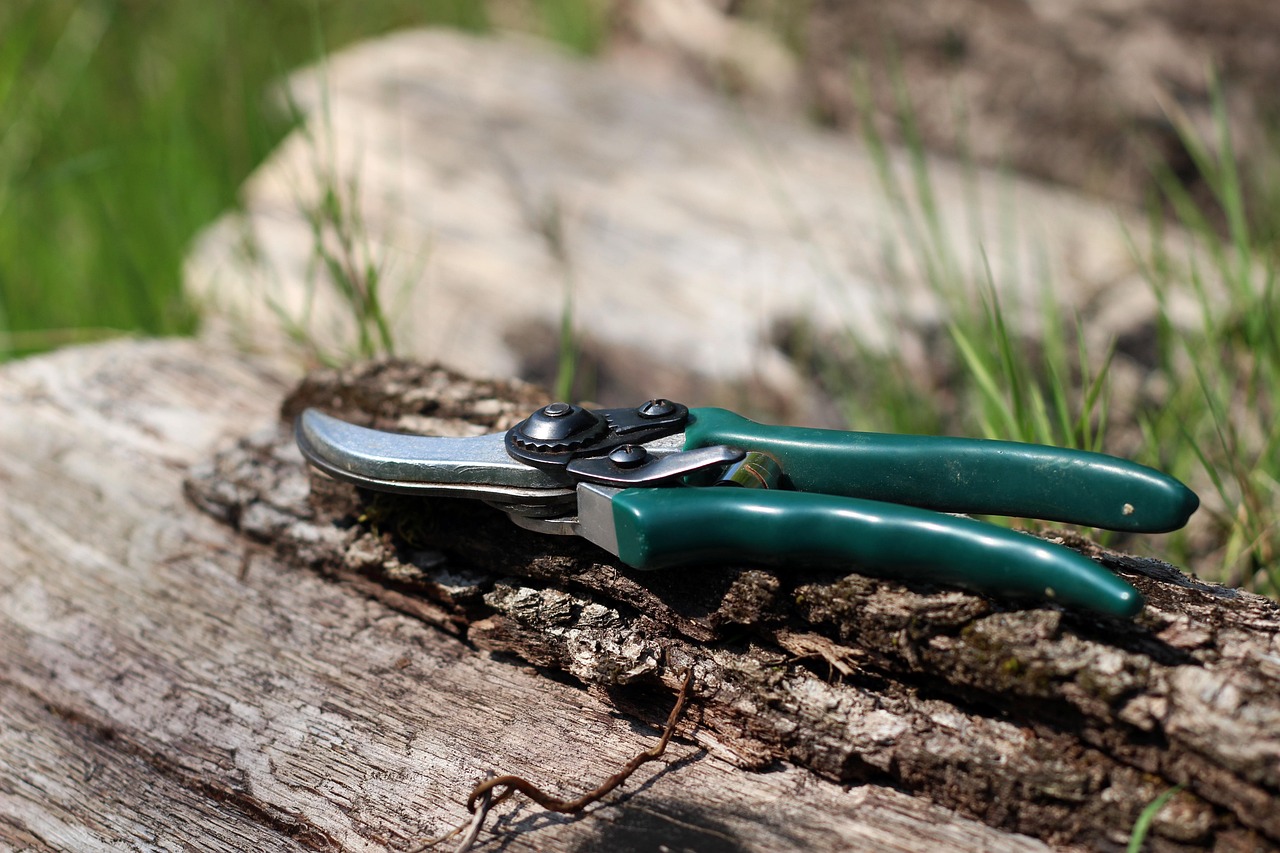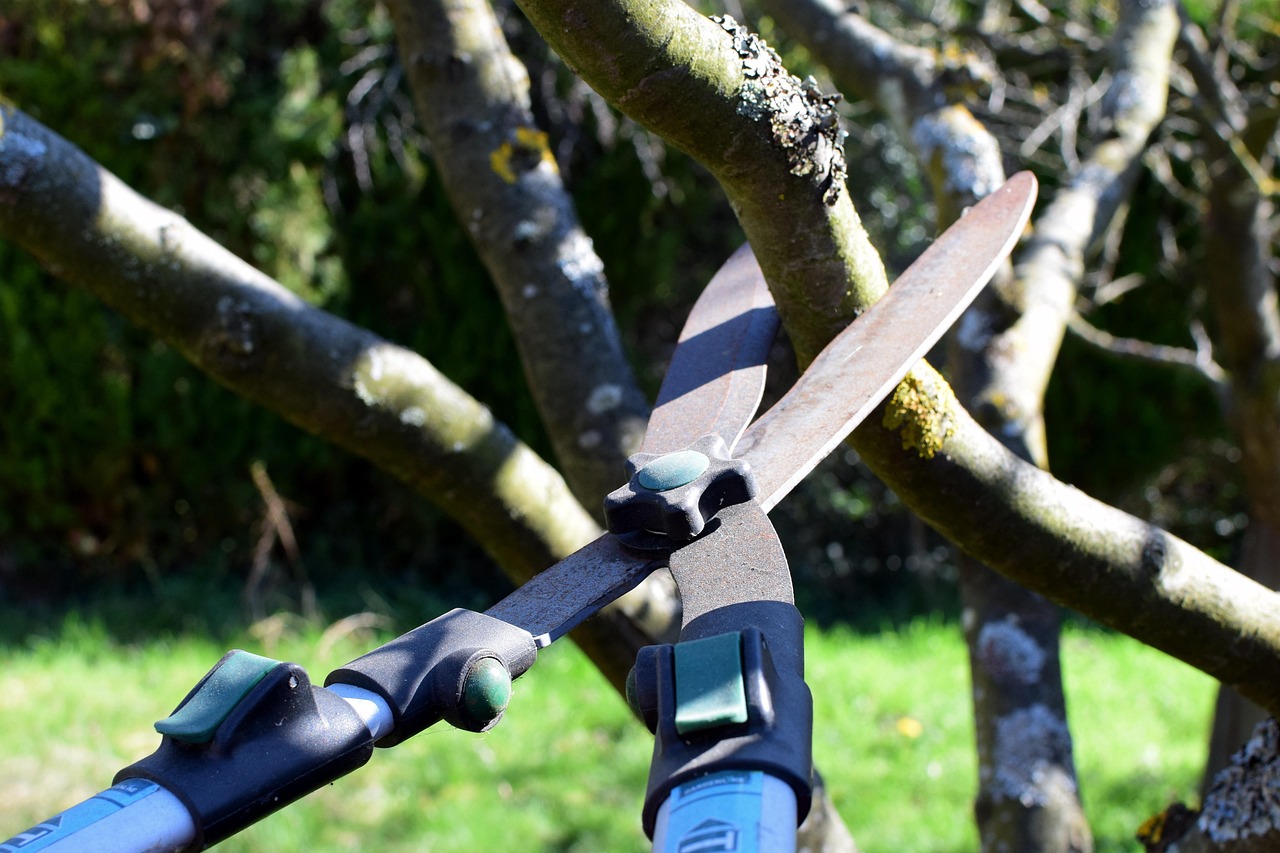Pruning techniques for coastal areas focus on enhancing plant resilience against harsh winds, salt spray, and sandy soils. These methods aim to promote healthy growth while maintaining the aesthetic value of coastal landscapes.
Coastal areas present unique challenges for plant growth due to environmental factors such as high salinity, strong winds, and shifting sand. The vegetation in these regions must be adapted to withstand these conditions. Proper pruning techniques can help plants thrive despite these adversities. By removing dead or damaged branches, gardeners can encourage new growth and improve air circulation. Additionally, strategic pruning can help shape plants for better wind resistance and overall health.

Understanding the specific needs of coastal plants is important for successful pruning. Many species found in these areas have unique growth patterns that require tailored approaches. For instance, some plants may benefit from light trimming, while others might need more significant reductions to promote strong, resilient structures. It is essential to know the right time and method for pruning different species to avoid stressing the plants.
Understanding Coastal Plant Species
Coastal areas often host a variety of plant species that have adapted to their environment. Some of the most common types include:
- Salt-tolerant shrubs such as sea oats and beach elder
- Hardy trees like the live oak and red cedar
- Perennial grasses that help stabilize dunes
- Flowering plants like beach morning glory
Each of these species has different requirements when it comes to pruning. For example, sea oats play a crucial role in dune stabilization. Therefore, excessive pruning could undermine their ability to hold sand in place. Conversely, shrubs like beach elder may thrive with regular trimming, promoting denser growth and better wind resistance.

Best Practices for Pruning Coastal Plants
When pruning plants in coastal areas, following best practices ensures that you support their health and longevity. Here are some essential tips:
- Choose the Right Time: The best time to prune many coastal plants is during their dormant season. This is typically late winter or early spring before new growth begins.
- Use Proper Tools: Ensure your tools are sharp and clean to prevent damage to the plants. Using the right tools also helps make cleaner cuts.
- Avoid Heavy Pruning: Coastal plants often struggle with heavy cuts. Focus on light trimming to remove dead or diseased branches instead of cutting back significantly.
- Shape for Wind Resistance: Prune plants to create a more compact shape. This can help them withstand strong coastal winds better than tall or leggy forms.
These practices not only support plant health but also contribute to the overall aesthetics of coastal landscapes. Properly pruned plants can enhance visual appeal while providing necessary functions such as erosion control and habitat for wildlife.
Specific Pruning Techniques
Different coastal plants require specific techniques tailored to their growth habits. Below are some strategies for common coastal species:

| Plant Species | Pruning Technique | Frequency |
|---|---|---|
| Sea Oats | Remove dead stems after flowering | Annually |
| Beach Elder | Lightly trim to encourage bushy growth | Every 1-2 years |
| Live Oak | Thin out branches to reduce wind resistance | Every 3-5 years |
| Beach Morning Glory | Cut back after flowering to promote regrowth | Annually |
Implementing these techniques ensures that each plant thrives in its specific environment. Understanding the characteristics of coastal species allows gardeners to make informed decisions about pruning methods and timing.
In addition to enhancing plant health, proper pruning in coastal areas can also improve the overall ecosystem. Healthy plants provide habitats for various wildlife and contribute to the stability of fragile coastal environments. Pruning techniques should always be implemented with an understanding of the ecological impact on the surrounding area.
Adopting a mindful approach to pruning can significantly benefit both gardeners and the coastal landscapes they care for. By integrating these techniques into regular maintenance routines, individuals can foster vibrant, resilient coastal gardens that withstand the unique challenges posed by their environment.

Seasonal Considerations for Pruning
Timing is crucial when it comes to pruning coastal plants. Each species has its own growth cycle, which affects when and how it should be pruned. Understanding these seasonal considerations can lead to healthier plants and better results.
Pruning during the wrong season can stress plants and hinder their growth. Here are some key factors to consider:
- Growth Cycle: Most coastal plants grow vigorously in the spring and summer. Pruning during this period can remove new growth and reduce flowering potential.
- Dormancy: Late winter or early spring is often the best time to prune many coastal species. This is when they are dormant and less susceptible to shock.
- Flowering Time: Some plants bloom on old wood. Pruning them before they flower can eliminate buds, reducing their aesthetic appeal.
By aligning pruning activities with the natural growth cycles of plants, gardeners can maximize the health and beauty of their coastal gardens.
Tools and Equipment for Effective Pruning
The right tools can make a significant difference in the efficiency and effectiveness of pruning. Investing in high-quality equipment helps ensure clean cuts, which promote faster healing and reduce the risk of disease.
Essential Pruning Tools
Here are some essential tools that every gardener should have for pruning coastal plants:
- Hand Pruners: Ideal for small branches and stems; they provide precision and control.
- Loppers: Suitable for thicker branches, loppers have longer handles for added leverage.
- Saws: A small pruning saw is useful for larger branches that cannot be cut with hand pruners.
- Hedge Shears: Perfect for shaping shrubs and hedges, these tools help achieve a uniform look.
- Protective Gear: Gloves, goggles, and long sleeves should always be worn to prevent injuries.
Using the appropriate tools ensures that the pruning process is efficient, safe, and effective. Regular maintenance of these tools, such as cleaning and sharpening, is also essential to keep them in good working condition.
Common Mistakes to Avoid When Pruning Coastal Plants
Even experienced gardeners can make mistakes when it comes to pruning. Being aware of common pitfalls can help avoid damage to coastal plants.
- Pruning Too Much: Over-pruning can weaken plants and reduce their ability to survive harsh coastal conditions.
- Ineffective Cuts: Making jagged or improper cuts can lead to disease entry points. Always aim for clean, angled cuts.
- Ignoring Plant Health: Focusing only on aesthetics can overlook underlying health issues. Always assess the overall health of the plant before pruning.
- Neglecting Soil Conditions: Healthy soil supports strong growth. Ensure that soil quality is maintained alongside pruning efforts.
Avoiding these mistakes can lead to a more robust and visually appealing coastal garden. Careful observation and planning before each pruning session are essential for long-term success.
The Role of Pruning in Coastal Ecosystems
Pruning does not only benefit individual plants; it also plays a vital role in maintaining the overall health of coastal ecosystems. Healthy plants contribute to biodiversity and provide habitats for various species.
The following points highlight how pruning positively influences coastal ecosystems:
- Erosion Control: Well-maintained plants help stabilize soils and prevent erosion, which is crucial in coastal areas.
- Biodiversity Enhancement: Pruning encourages new growth, which can attract diverse wildlife and pollinators.
- Improved Air Quality: Healthy vegetation contributes to cleaner air by absorbing pollutants and releasing oxygen.
Through mindful pruning practices, gardeners can support both their landscapes and local ecosystems, fostering a harmonious relationship between human activities and nature.
Caring for Pruned Plants
After pruning, plants require special care to recover from the stress of cutting. Proper post-pruning care is essential for promoting healthy regrowth and ensuring the longevity of the plants.
Post-Pruning Care Tips
The following tips can help ensure that pruned coastal plants thrive:
- Watering: Adequate watering is crucial after pruning. Ensure that the soil remains moist but not waterlogged.
- Fertilization: Applying a balanced fertilizer can provide essential nutrients that promote new growth.
- Pest Control: Monitor for pests or diseases that may take advantage of stressed plants. Early intervention can prevent serious problems.
- Mulching: Adding mulch around the base of plants helps retain moisture and regulates soil temperature.
Caring for pruned plants properly enhances their resilience against environmental stressors. With the right attention, these plants will flourish and continue to beautify coastal areas for years to come.
Advanced Pruning Techniques for Coastal Plants
As gardeners become more experienced, they may seek advanced pruning techniques tailored specifically for coastal plants. These methods aim to improve plant health, enhance aesthetics, and ensure structural integrity against environmental challenges.
Thinning vs. Topping
One important distinction in pruning techniques is between thinning and topping. Understanding these two methods is crucial for maintaining the health of coastal flora.
- Thinning: This technique involves selectively removing branches or stems to open up the plant’s structure. Thinning encourages better air circulation and light penetration, which helps reduce disease risk and promotes healthy growth.
- Topping: Topping is the practice of cutting off the tops of plants. This method can lead to weak regrowth and should be avoided for most coastal species. It disrupts the plant’s natural growth patterns and can expose it to wind damage.
Choosing thinning over topping can lead to stronger, healthier plants that are better suited for coastal conditions.
Espalier and Other Training Methods
Training plants through methods like espalier can be particularly beneficial in coastal areas where space is limited or where aesthetic appeal is desired. Espalier involves training plants to grow flat against a wall or trellis.
- Benefits of Espalier:
- Maximizes space by growing vertically.
- Enhances sunlight exposure, improving photosynthesis.
- Creates a visually appealing landscape feature.
- Other Training Methods: Techniques such as pruning for shape and form can help create strong barriers against wind and salt spray.
Utilizing these training methods not only improves the aesthetic qualities of coastal gardens but also supports plant health and resilience.
Species-Specific Pruning Guidelines
Every coastal plant species has unique requirements for pruning that must be taken into account. Here, we will explore guidelines for some common coastal species.
| Plant Species | Pruning Guidelines | Best Time to Prune |
|---|---|---|
| Saltbush (Atriplex spp.) | Remove dead wood and thin to promote new growth. | Early spring, before new growth appears. |
| Beach Strawberry (Fragaria chiloensis) | Cut back old leaves to encourage fruiting. | Late winter to early spring. |
| Pineapple Guava (Feijoa sellowiana) | Thin out older branches to allow sunlight in; shape as needed. | Late winter to early spring. |
| Crape Myrtle (Lagerstroemia indica) | Prune to remove suckers and dead branches; shape as desired. | Late winter to early spring. |
Each of these species requires specific attention during pruning to ensure optimal health and growth. By following these guidelines, gardeners can create thriving coastal gardens tailored to the unique characteristics of each plant.
Environmental Considerations in Pruning
The coastal environment poses unique challenges that must be considered during pruning activities. Factors such as wind, salt spray, and soil type can influence how and when pruning should be performed.
Wind Resistance Strategies
Coastal winds can severely impact plant stability. Implementing strategies for enhancing wind resistance is essential:
- Prune for Compactness: Keep plants compact by regularly removing leggy growth. This reduces wind resistance and minimizes damage during storms.
- Create Windbreaks: Planting a variety of species together can serve as a natural windbreak. This layered approach provides protection for more delicate plants.
- Avoid Tall Varieties: Choose lower-growing varieties that are naturally more resistant to wind damage.
Managing Salt Spray Exposure
Salt spray can cause significant stress to many coastal plants. Pruning can help manage exposure:
- Selective Pruning: Focus on removing branches that are directly exposed to salt spray while maintaining overall plant structure.
- Use Salt-Tolerant Species: Incorporate salt-tolerant plants in areas most affected by spray to minimize damage.
Being aware of these environmental considerations helps gardeners make informed decisions about when and how to prune their coastal plants effectively.
Incorporating Native Plants into Coastal Pruning Practices
Using native plants in coastal gardening offers numerous benefits, including lower maintenance requirements and better adaptation to local conditions. Pruning practices should reflect these advantages by focusing on the specific needs of native species.
Benefits of Native Plants
- Drought Resistance: Native plants often require less water, making them ideal for coastal areas with variable rainfall.
- Biodiversity Support: Native species provide habitat and food sources for local wildlife, enhancing ecological balance.
- Erosion Control: Many native plants have deep root systems that stabilize sandy soils and prevent erosion.
By integrating native plants into pruning practices, gardeners can foster a resilient ecosystem while minimizing maintenance efforts. Understanding how to care for these species through appropriate pruning enhances their ability to thrive in coastal environments.
The careful consideration of various factors related to coastal gardening will lead to more successful pruning outcomes. With the right techniques and knowledge, gardeners can create thriving, sustainable landscapes that thrive amidst the challenges presented by coastal environments.
In addition to the techniques discussed, understanding the ecological impact of pruning practices is vital for gardeners in coastal areas. This insight not only enhances plant health but also helps preserve the unique biodiversity of coastal ecosystems.
Ecological Impact of Pruning
Pruning can significantly affect local flora and fauna. When done responsibly, it can promote a balanced ecosystem. Here are several ecological considerations to keep in mind:
- Habitat Preservation: Many coastal plants provide critical habitat for birds and other wildlife. Avoiding excessive pruning during nesting seasons helps protect these habitats.
- Pollinator Support: Some coastal plants produce flowers that are vital for pollinators. Pruning practices should aim to enhance flowering rather than diminish it, thereby supporting local pollinator populations.
- Soil Health: Pruning can improve soil health by promoting new growth, which in turn contributes organic matter to the soil as leaves and branches decompose.
By considering these ecological impacts, gardeners can implement pruning techniques that not only benefit individual plants but also support the wider environment.
Community Involvement and Education
Engaging with the community and participating in educational programs can further enhance the effectiveness of pruning techniques in coastal areas. Here are some ways to promote awareness and involvement:
- Workshops and Demonstrations: Hosting workshops on proper pruning techniques can educate community members and promote best practices that benefit local gardens.
- Native Plant Sales: Organizing events that sell native plants encourages individuals to incorporate species that are well-suited for coastal environments, reducing maintenance needs.
- Volunteer Programs: Creating volunteer opportunities for community members to help with local parks or coastal restoration projects fosters a sense of community and shared responsibility for landscaping efforts.
Community involvement not only enhances the knowledge base around pruning techniques but also fosters a collective commitment to preserving the coastal environment.
Innovative Practices in Coastal Gardening
As gardening practices evolve, new techniques continue to emerge. Staying informed about innovative practices can enhance traditional pruning methods:
- Use of Technology: Utilizing apps or software that provide guidance on plant care and pruning schedules can help gardeners keep track of their plants’ needs more effectively.
- Sustainable Practices: Emphasizing organic gardening methods, including natural pest control and organic fertilizers, supports healthier plant growth while minimizing environmental impact.
- Collaboration with Local Experts: Partnering with local horticulturists or universities can provide valuable insights into the latest research and best practices in coastal gardening.
Integrating innovative practices into traditional pruning techniques can lead to more effective and sustainable outcomes in coastal gardening.
Final Thoughts
Pruning techniques for coastal areas require careful consideration of both plant health and ecological impact. By understanding the specific needs of coastal species, gardeners can implement effective pruning strategies that enhance the resilience of their landscapes. The importance of timing, appropriate tools, and species-specific guidelines cannot be overstated when aiming for successful outcomes.
Moreover, fostering community involvement through education and innovative practices ensures that these techniques are shared and understood widely. Embracing native plants not only simplifies maintenance but also supports biodiversity, making coastal gardens more sustainable in the long run.
By applying these principles, gardeners can cultivate vibrant coastal landscapes that thrive despite environmental challenges. Ultimately, successful pruning is about creating a harmonious balance between beauty, health, and ecological responsibility, paving the way for thriving ecosystems along our coastlines.
